Previous issues
- Page Path
- HOME > Browse Articles > Previous issues
- [English]
- Production of Porous Metallic Glass Granule by Optimizing Chemical Processing
- Song-Yi Kim, Bo-Kyung Guem, Min-Ha Lee, Taek-Soo Kim, Jurgen Eckert, Bum-Sung Kim
- J Korean Powder Metall Inst. 2014;21(4):251-255. Published online August 1, 2014
- DOI: https://doi.org/10.4150/KPMI.2014.21.4.251
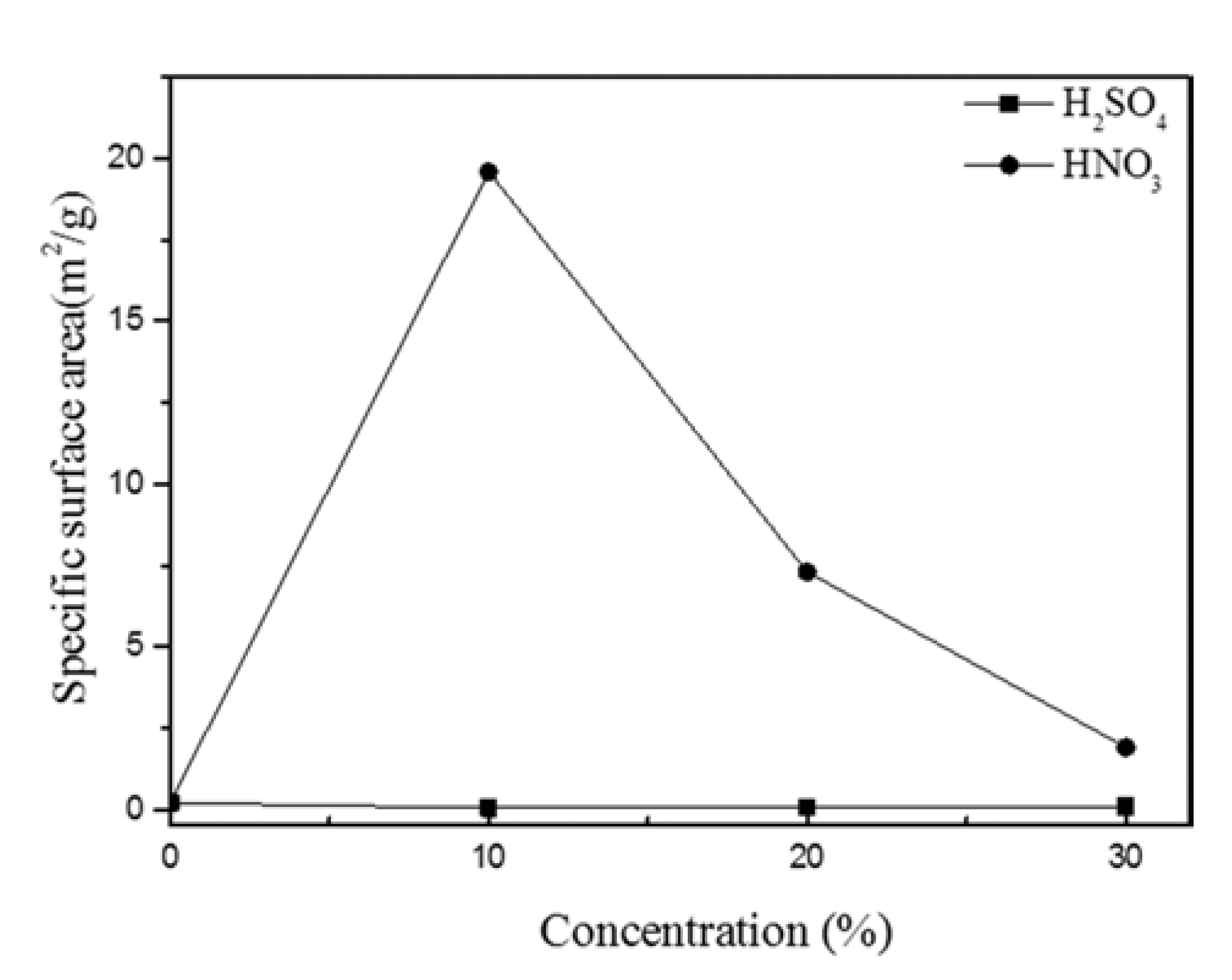
- 878 View
- 2 Download
- 1 Citations
-
 Abstract
Abstract
 PDF
PDF In this study, we optimized dissolution the dissolution conditions of porous amorphous powder to have high specific surface area. Porous metallic glass(MG) granules were fabricated by selective phase dissolution, in which brass is removed from a composite powder consisting of MG and 40 vol.% brass. Dissolution was achieved through various concentrations of H2SO4 and HNO3, with HNO3 proving to have the faster reaction kinetics. Porous powders were analyzed by differential scanning calorimetry to observe crystallization behavior. The Microstructure of milled powder and dissolved powder was analyzed by scanning electron microscope. To check for residual in the dissolved powder after dissolution, energy dispersive X-ray spectroscory and elemental mapping was conducted. It was confirmed that the MG/brass composite powder dissolved in 10% HNO3 produced a porous MG granule with a relatively high specific surface area of 19.60 m2/g. This proved to be the optimum dissolution condition in which both a porous internal granule structure and amorphous phase were maintained. Consequently, porous MG granules were effectively fabricated and applications of such structures can be expanded.
-
Citations
Citations to this article as recorded by- Enhanced wear resistivity of a Zr-based bulk metallic glass processed by high-pressure torsion under reciprocating dry conditions
Soo-Hyun Joo, Dong-Hai Pi, Jing Guo, Hidemi Kato, Sunghak Lee, Hyoung Seop Kim
Metals and Materials International.2016; 22(3): 383. CrossRef
- Enhanced wear resistivity of a Zr-based bulk metallic glass processed by high-pressure torsion under reciprocating dry conditions
- [English]
- Spark Plasma Sintering Behaviors of M-type Barium Hexaferrite Nano Powders
- Im Doo Jung, Youngmoo Kim, Yang-Ki Hong, Seong Jin Park
- J Korean Powder Metall Inst. 2014;21(4):256-259. Published online August 1, 2014
- DOI: https://doi.org/10.4150/KPMI.2014.21.4.256

- 760 View
- 4 Download
- 5 Citations
-
 Abstract
Abstract
 PDF
PDF A magnetic powder, M-type barium hexaferrite (BaFe12O19), was consolidated with the spark plasma sintering process. Three different holding temperatures, 850°C, 875°C and 900°C were applied to the spark plasma sintering process with the same holding times, heating rates and compaction pressure of 30 MPa. The relative density was measured simultaneously with spark plasma sintering and the convergent relative density after cooling was found to be proportional to the holding temperature. The full relative density was obtained at 900°C and the total sintering time was only 33.3 min, which was much less than the conventional furnace sintering method. The higher holding temperature also led to the higher saturation magnetic moment (σs) and the higher coercivity (Hc) in the vibrating sample magnetometer measurement. The saturation magnetic moment (σs) and the coercivity (Hc) obtained at 900°C were 56.3 emu/g and 541.5 Oe for each.
-
Citations
Citations to this article as recorded by- Effect of microwave sintering on density, microstructural and magnetic properties of pure strontium hexaferrite at low temperatures and heating rate
Wail M. Matran, Mazli Mustapha, Mohd Faizairi Nor, Faizal Mustapha, Fahd Saeed Alakbari, Gamal Al-shawesh, Mohammed Bawahab
Heliyon.2024; 10(20): e38766. CrossRef - A study of crystalline – texture and anisotropic properties of hexagonal BaFe12O19 sintered by in-situ magnetic-anisotropy spark plasma sintering (MASPS)
Haetham G. Mohammed, Thar Mohammed Badri Albarody, Husam Kareem Mohsin Al-Jothery, Mazli Mustapha, N.M Sultan
Journal of Magnetism and Magnetic Materials.2022; 553: 169268. CrossRef - Process Optimization of In Situ Magnetic-Anisotropy Spark Plasma Sintering of M-Type-Based Barium Hexaferrite BaFe12O19
Haetham Mohammed, Thar Albarody, Susilawati Susilawati, Scott Gohery, Aris Doyan, Saiful Prayogi, Muhammad Bilad, Reza Alebrahim, Anwar Saeed
Materials.2021; 14(10): 2650. CrossRef - Self-Consolidation and Surface Modification of Mechanical Alloyed Ti-25.0 at.% Al Powder Mixture by Using an Electro-Discharge Technique
S.Y. Chang, H.S. Jang, Y.H. Yoon, Y.H. Kim, J.Y. Kim, Y.K. Lee, W.H. Lee
Archives of Metallurgy and Materials.2017; 62(2): 1293. CrossRef - Plastic deformation and microstructural evolution during the shock consolidation of ultrafine copper powders
Dong-Hyun Ahn, Wooyeol Kim, Minju Kang, Lee Ju Park, Sunghak Lee, Hyoung Seop Kim
Materials Science and Engineering: A.2015; 625: 230. CrossRef
- Effect of microwave sintering on density, microstructural and magnetic properties of pure strontium hexaferrite at low temperatures and heating rate
- [Korean]
- Study on Hardness and Corrosion Resistance of Magnesium by Anodizing and Sealing Treatment With Nano-diamond Powder
- Soo Young Kang, Dae Won Lee
- J Korean Powder Metall Inst. 2014;21(4):260-265. Published online August 1, 2014
- DOI: https://doi.org/10.4150/KPMI.2014.21.4.260

- 842 View
- 6 Download
- 4 Citations
-
 Abstract
Abstract
 PDF
PDF In this study, in order to increase surface ability of hardness and corrosion of magnesium alloy, anodizing and sealing with nano-diamond powder was conducted. A porous oxide layer on the magnesium alloy was successfully made at 85°C through anodizing. It was found to be significantly more difficult to make a porous oxide layer in the magnesium alloy compared to an aluminum alloy. The oxide layer made below 73°C by anodizing had no porous layer. The electrolyte used in this study is DOW 17 solution. The surface morphology of the magnesium oxide layer was investigated by a scanning electron microscope. The pores made by anodizing were sealed by water and aqueous nanodiamond powder respectively. The hardness and corrosion resistance of the magnesium alloy was increased by the anodizing and sealing treatment with nano-diamond powder.
-
Citations
Citations to this article as recorded by- The effect of different turbulent flow on failure behavior in secondary loop of the pressurized water reactor
Y. Hu, L. Zhao, Y.H. Lu, T. Shoji
Nuclear Engineering and Design.2020; 368: 110812. CrossRef - Effect of heat treatment on corrosion resistance and adhesion property in Zn-Mg-Zn multi-layer coated steel prepared by PVD process
Jong Min Byun, Su-Ryong Bang, Hyun Woo Kim, Tae-Yeob Kim, Suk-Jun Hong, Young Do Kim
Surface and Coatings Technology.2017; 309: 1010. CrossRef - Convergent Study of Aluminum Anodizing Method on the Thermal Fatigue
Soo Young Kang
Journal of the Korea Convergence Society.2016; 7(5): 169. CrossRef - Convergent Study of Texture on the Mechanical Properties of Electrodeposits
Soo Young Kang
Journal of the Korea Convergence Society.2016; 7(6): 193. CrossRef
- The effect of different turbulent flow on failure behavior in secondary loop of the pressurized water reactor
- [Korean]
- The Effect of Fe and Fe2O3 Powder Mixing Ratios on the Pore Properties of Fe Foam Fabricated by a Slurry Coating Process
- Jin Ho Choi, Eun-Mi Jeong, Dahee Park, Sangsun Yang, Yoo-Dong Hahn, Jung-Yeul Yun
- J Korean Powder Metall Inst. 2014;21(4):266-270. Published online August 1, 2014
- DOI: https://doi.org/10.4150/KPMI.2014.21.4.266

- 1,061 View
- 4 Download
- 1 Citations
-
 Abstract
Abstract
 PDF
PDF Metal foams have a cellular structure consisting of a solid metal containing a large volume fraction of pores. In particular, open, penetrating pores are necessary for industrial applications such as in high temperature filters and as a support for catalysts. In this study, Fe foam with above 90% porosity and 2 millimeter pore size was successfully fabricated by a slurry coating process and the pore properties were characterized. The Fe and Fe2O3 powder mixing ratios were controlled to produce Fe foams with different pore size and porosity. First, the slurry was prepared by uniform mixing with powders, distilled water and polyvinyl alcohol(PVA). After slurry coating on the polyurethane( PU) foam, the sample was dried at 80°C. The PVA and PU foams were then removed by heating at 700°C for 3 hours. The debinded samples were subsequently sintered at 1250°C with a holding time of 3 hours under hydrogen atmosphere. The three dimensional geometries of the obtained Fe foams with an open cell structure were investigated using X-ray micro CT(computed tomography) as well as the pore morphology, size and phase. The coated amount of slurry on the PU foam were increased with Fe2O3 mixing powder ratio but the shrinkage and porosity of Fe foams were decreased with Fe2O3 mixing powder ratio.
-
Citations
Citations to this article as recorded by- Fabrication and Mechanical Properties of STS316L Porous Metal for Vacuum Injection Mold
Se Hoon Kim, Sang Min Kim, Sang Ho Noh, Jin Pyeong Kim, Jae Hyuck Shin, Si-Young Sung, Jin Kwang Jin, Taean Kim
Journal of Korean Powder Metallurgy Institute.2015; 22(3): 197. CrossRef
- Fabrication and Mechanical Properties of STS316L Porous Metal for Vacuum Injection Mold
- [Korean]
- Microstructure Evolution of 15Cr ODS Steel by a Simple Torsion Test
- Hyun Ju Jin, Suk Hoon Kang, Tae Kyu Kim
- J Korean Powder Metall Inst. 2014;21(4):271-276. Published online August 1, 2014
- DOI: https://doi.org/10.4150/KPMI.2014.21.4.271
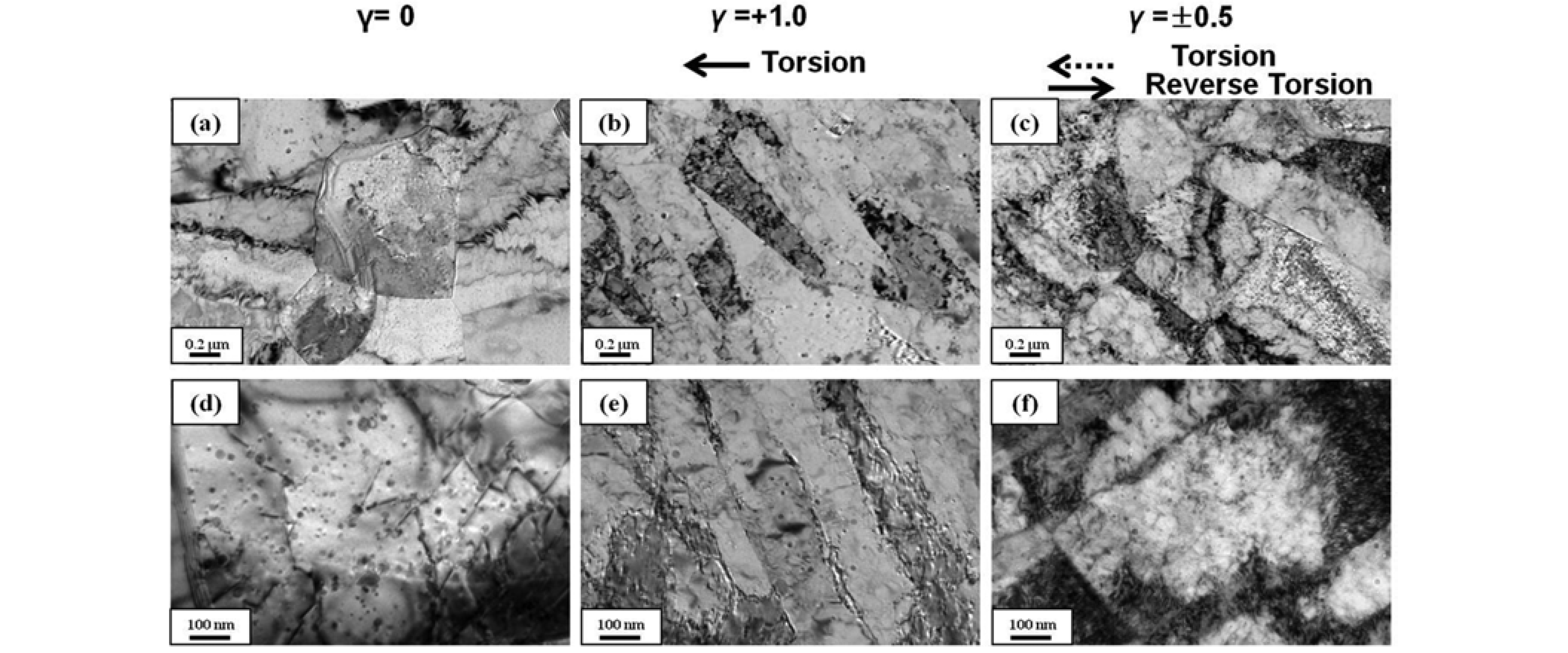
- 567 View
- 1 Download
- 4 Citations
-
 Abstract
Abstract
 PDF
PDF 15Cr-1Mo base oxide dispersion strengthened (ODS) steel which is considered to be as a promising candidate for high- temperature components in nuclear fusion and fission systems because of its excellent high temperature strength, corrosion and radiation resistance was fabricated by using mechanical alloying, hot isostatic pressing and hot rolling. Torsion tests were performed at room temperature, leading to two different shear strain routes in the forward and reverse directions. In this study, microstructure evolution of the ODS steel during simple shearing was investigated. Fine grained microstructure and a cell structure of dislocation with low angle boundaries were characterized with shear strain in the shear deformed region by electron backscattered diffraction (EBSD). Grain refinement with shear strain resulted in an increase in hardness. After the forward-reverse torsion, the hardness value was measured to be higher than that of the forward torsion only with an identical shear strain amount, suggesting that new dislocation cell structures inside the grain were generated, thus resulting in a larger strengthening of the steel.
-
Citations
Citations to this article as recorded by- Effect of high-energy ball milling on the microstructure and mechanical properties of Ni-based ODS alloys fabricated using gas-atomized powder
Chun Woong Park, Won June Choi, Jongmin Byun, Young Do Kim
Journal of Materials Science.2022; 57(38): 18195. CrossRef - Analysis on Milling Behavior of Oxide Dispersion Strengthened Ni-based Atomizing Powder with Ni5Y Intermetallic Phase
Chun Woong Park, Jong Min Byun, Won June Choi, Young Do Kim
Journal of Korean Powder Metallurgy Institute.2019; 26(2): 101. CrossRef - Current Status and Future Prospective of Advanced Radiation Resistant Oxide Dispersion Strengthened Steel (ARROS) Development for Nuclear Reactor System Applications
Tae Kyu Kim, Sanghoon Noh, Suk Hoon Kang, Jin Ju Park, Hyun Ju Jin, Min Ku Lee, Jinsugn Jang, Chang Kyu Rhee
Nuclear Engineering and Technology.2016; 48(2): 572. CrossRef - A Precipitation Behavior of Nano-Oxide Particles in Mechanically Alloyed Fe-5Y2O3Powders
Ga Eon Kim, Sanghoon Noh, Ji Eun Choi, Young Do Kim, Tae Kyu Kim
Journal of Korean Powder Metallurgy Institute.2015; 22(1): 46. CrossRef
- Effect of high-energy ball milling on the microstructure and mechanical properties of Ni-based ODS alloys fabricated using gas-atomized powder
- [Korean]
- Hot Deformation Behavior and Microstructural Evolution of Powder Metallurgy Ti-6Al-4V Alloy
- Youngmoo Kim, Young-Beom Song, Sung Ho Lee, Young-Sam Kwon
- J Korean Powder Metall Inst. 2014;21(4):277-285. Published online August 1, 2014
- DOI: https://doi.org/10.4150/KPMI.2014.21.4.277
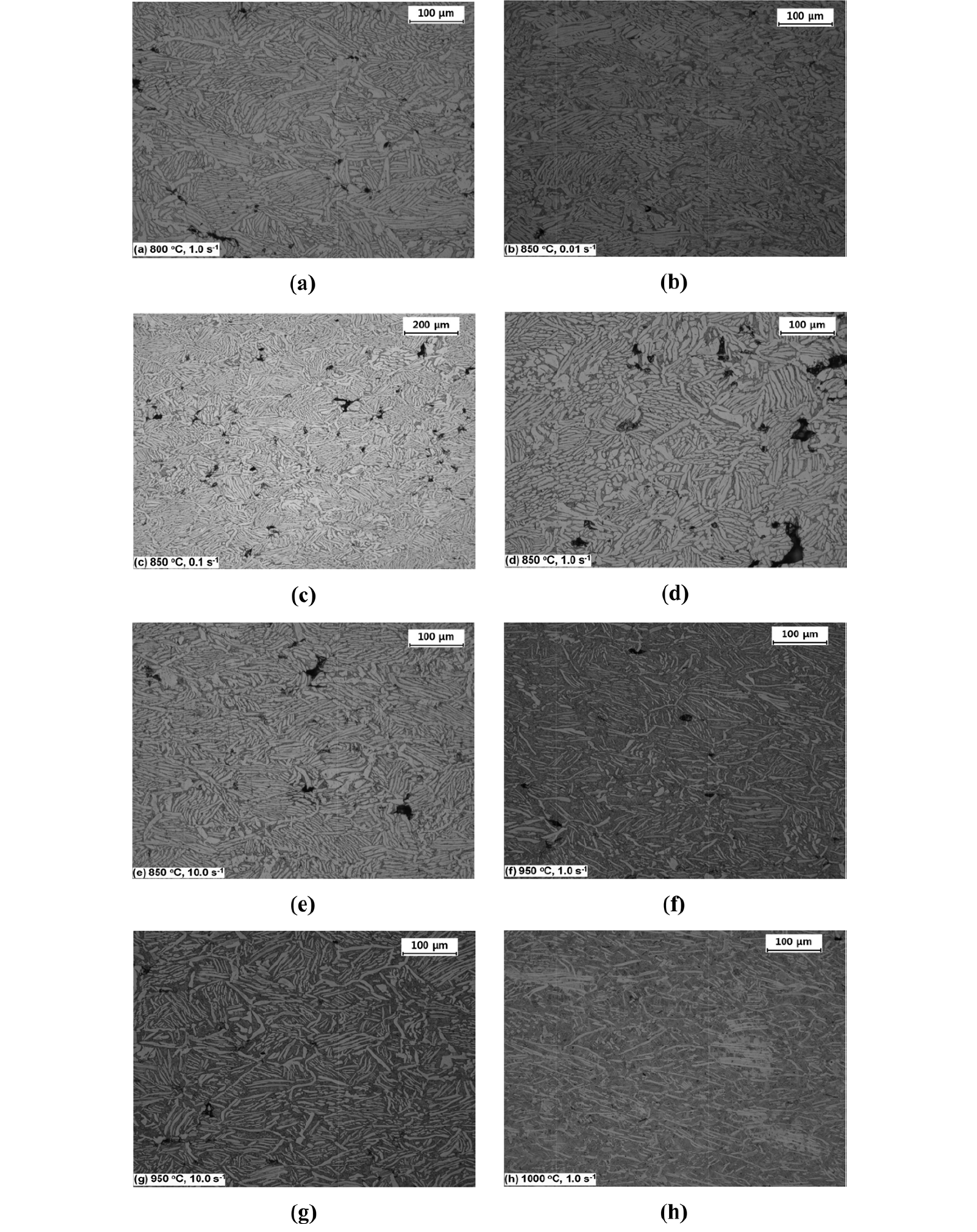
- 698 View
- 8 Download
- 3 Citations
-
 Abstract
Abstract
 PDF
PDF The effects of processing parameters on the flow behavior and microstructures were investigated in hot compression of powder metallurgy (P/M) Ti-6Al-4V alloy. The alloy was fabricated by a blended elemental (B/E) approach and it exhibited lamellar α+β microstructure. The hot compression tests were performed in the range of temperature 800-1000°C with 50°C intervals, strain rate 10−4-10 s−1, and strain up to 0.5. At 800-950°C, continuous flow softening after a peak stress was observed with strain rates lower than 0.1 s−1. At strain rates higher than 1 s−1, rapid drop in flow stress with strain hardening or broad oscillations was recorded. The processing map of P/M Ti-6Al-4V was designed based on the compression test and revealed the peak efficiency at 850°C and 0.001 s−1. As the processing temperature increased, the volume fraction of β phase was increased. In addition, below 950°C, the globularization of phase at the slower strain rate and kinking microstructures were found. Based on these data, the preferred working condition of the alloy may be in the range of 850-950°C and strain rate of 0.001-0.01 s−1.
-
Citations
Citations to this article as recorded by- Microstructure control and dynamic recrystallization behavior analysis in hot forging of metastable beta Ti-5Mo-4Fe alloy
In-Kyeong Jin, Jae-Gwan Lee, Yong-Jae Lee, Dong-Geun Lee
Journal of Alloys and Compounds.2025; 1010: 178125. CrossRef - High Temperature Deformation and Microstructural Evolution of Homogenized AA 2026 Alloy
HyeonWoo Kang, SooBin Kim, ByoungLok Jang, HeeKook Kim
Korean Journal of Metals and Materials.2023; 61(5): 338. CrossRef - Effect of Fe Content on the Microstructure and Mechanical Properties of Ti-Al-Mo-V-Cr-Fe Alloys
K.C. Bae, J.J. Oak, Y.H. Kim, Y.H. Park
Archives of Metallurgy and Materials.2017; 62(2): 1105. CrossRef
- Microstructure control and dynamic recrystallization behavior analysis in hot forging of metastable beta Ti-5Mo-4Fe alloy
- [Korean]
- Fabrication of LiNiO2 using NiSO4 Recovered from NCM (Li[Ni,Co,Mn]O2) Secondary Battery Scraps and Its Electrochemical Properties
- Yong-Gyu Kwag, Mi-So Kim, Yoo-Young Kim, Im-Sic Choi, Dong-Kyu Park, In-Sup Ahn, Kwon-Koo Cho
- J Korean Powder Metall Inst. 2014;21(4):286-293. Published online August 1, 2014
- DOI: https://doi.org/10.4150/KPMI.2014.21.4.286

- 640 View
- 3 Download
-
 Abstract
Abstract
 PDF
PDF The electrochemical properties of cells assembled with the LiNiO2 (LNO) recycled from cathode materials of waste lithium secondary batteries (Li[Ni,Co,Mn]O2), were evaluated in this study. The leaching, neutralization and solvent extraction process were applied to produce high-purity NiSO4 solution from waste lithium secondary batteries. High-purity NiO powder was then fabricated by the heat-treatment and mixing of the NiSO4 solution and H2C2O4. Finally, LiNiO2 as a cathode material for lithium ion secondary batteries was synthesized by heat treatment and mixing of the NiO and Li2CO3 powders. We assembled the cells using the LiNiO2 powders and evaluated the electrochemical properties. Subsequently, we evaluated the recycling possibility of the cathode materials for waste lithium secondary battery using the processes applied in this work.
- [Korean]
- The Effects of MoS2 Addition on the Mechanical Properties of Fe-Cr-Mn-C-V P/M Alloy
- Geon-Hong Kim, Hyun Seok Yang, Man-Sik Kong
- J Korean Powder Metall Inst. 2014;21(4):294-300. Published online August 1, 2014
- DOI: https://doi.org/10.4150/KPMI.2014.21.4.294

- 634 View
- 3 Download
-
 Abstract
Abstract
 PDF
PDF The connecting rod is one of the most important parts in automotive engines, transforming the reciprocal motion of a piston generated by internal combustion into the rotational motion of a crankshaft. Recent advances in high performance automobile engines demand corresponding technological breakthroughs in the materials for engine parts. In the present research, the powder metallurgy (P/M) process was used to replace conventional quenching and/or tempering processes for mass production and ultimately for more cost-efficient manufacturing of high strength connecting rods. The development of P/M alloy powder was undertaken not only to achieve the improvement in mechanical properties, but also to enhance the machinability of the P/M processed connecting rods. Specifically MoS2 powders were added as lubricants to non-normalizing Fe-Cr-Mn-V-C alloy powder to improve the post-sintering machinability. The effects of MoS2 addition on the microstructure, mechanical properties, and machining characteristics were investigated.
- [Korean]
- Micro-EDM Feasibility and Material Properties of Hybrid Ti2AlC Ceramic Bulk Materials
- Guk-Hyun Jeong, Kwang-Ho Kim, Myung-Chang Kang
- J Korean Powder Metall Inst. 2014;21(4):301-306. Published online August 1, 2014
- DOI: https://doi.org/10.4150/KPMI.2014.21.4.301
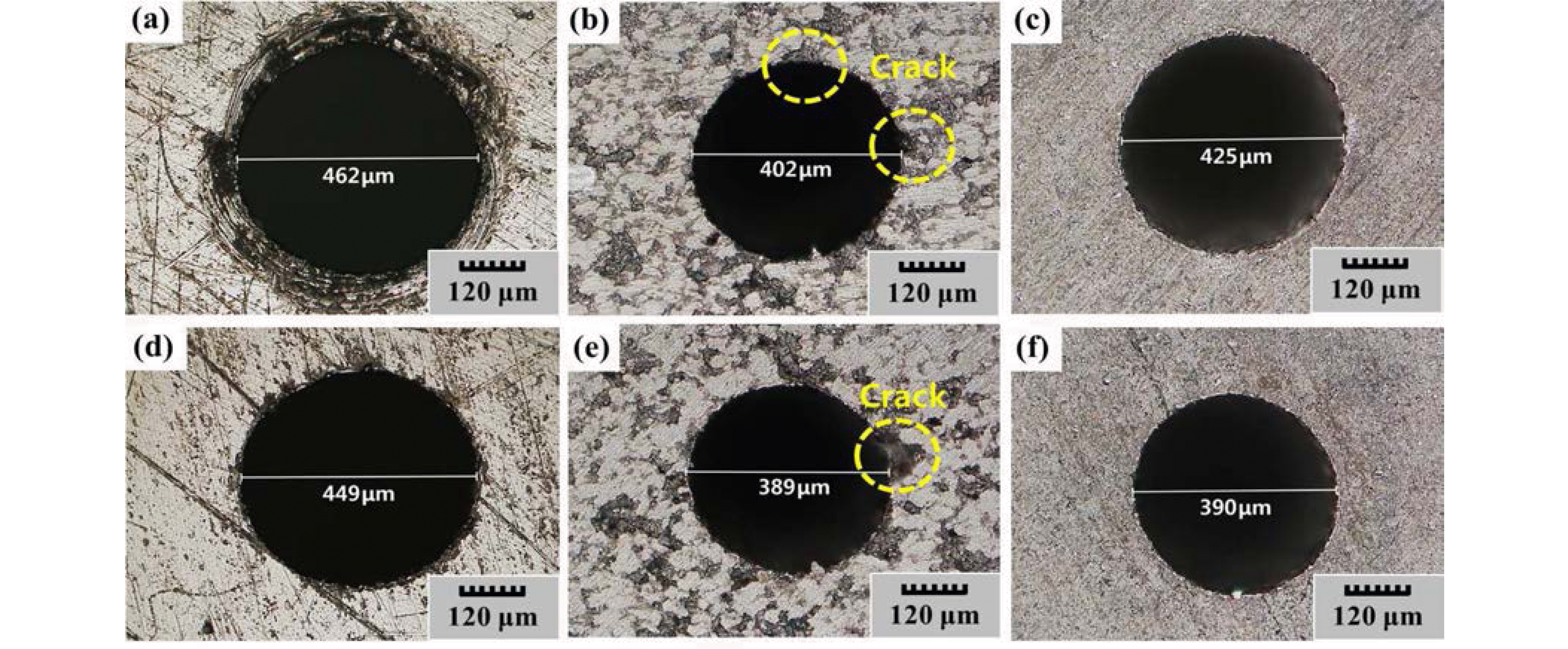
- 493 View
- 0 Download
- 1 Citations
-
 Abstract
Abstract
 PDF
PDF Titanium alloys are extensively used in high-temperature applications due to their excellent high strength and corrosion resistance properties. However, titanium alloys are problematic because they tend to be extremely difficult-tocut material. In this paper, the powder synthesis, spark plasma sintering (SPS), bulk material characteristics and machinability test of hybrid Ti2AlC ceramic bulk materials were systematically examined. The bulk samples mainly consisted of Ti2AlC materials with density close to theoretical value were synthesized by a SPS method. Random orientation and good crystallization of the Ti2AlC was observed at 1100°C for 10 min under SPS sintering conditions. Scanning electron microscopy results indicated a homogeneous distribution and nano-laminated structure of Ti2AlC MAX phase. The hardness and electrical conductivity of Ti2AlC were higher than that of Ti 6242 alloy at sintering temperature of 1000°C~1100°C. Consequently, the machinability of the hybrid Ti2AlC bulk materials is better than that of the Ti 6242 alloy for micro-EDM process of micro-hole shape workpiece.
-
Citations
Citations to this article as recorded by- Evaluation of Material Characteristics with Sintering Temperature in Ti2AlC MAX Phase Material using Spark Plasma Sintering Method
Chang-Hun Lee, Gyung Rae Baek, Hee Sang Jung, Young-Keun Jeong, Myung Chang Kang
Journal of Korean Powder Metallurgy Institute.2015; 22(3): 175. CrossRef
- Evaluation of Material Characteristics with Sintering Temperature in Ti2AlC MAX Phase Material using Spark Plasma Sintering Method
- [Korean]
- Effect of Mechanical Milling Parameters on the Particle Size of Silver Flake
- Gil-Geun Lee, Hae-Young Jeong
- J Korean Powder Metall Inst. 2014;21(4):307-312. Published online August 1, 2014
- DOI: https://doi.org/10.4150/KPMI.2014.21.4.307
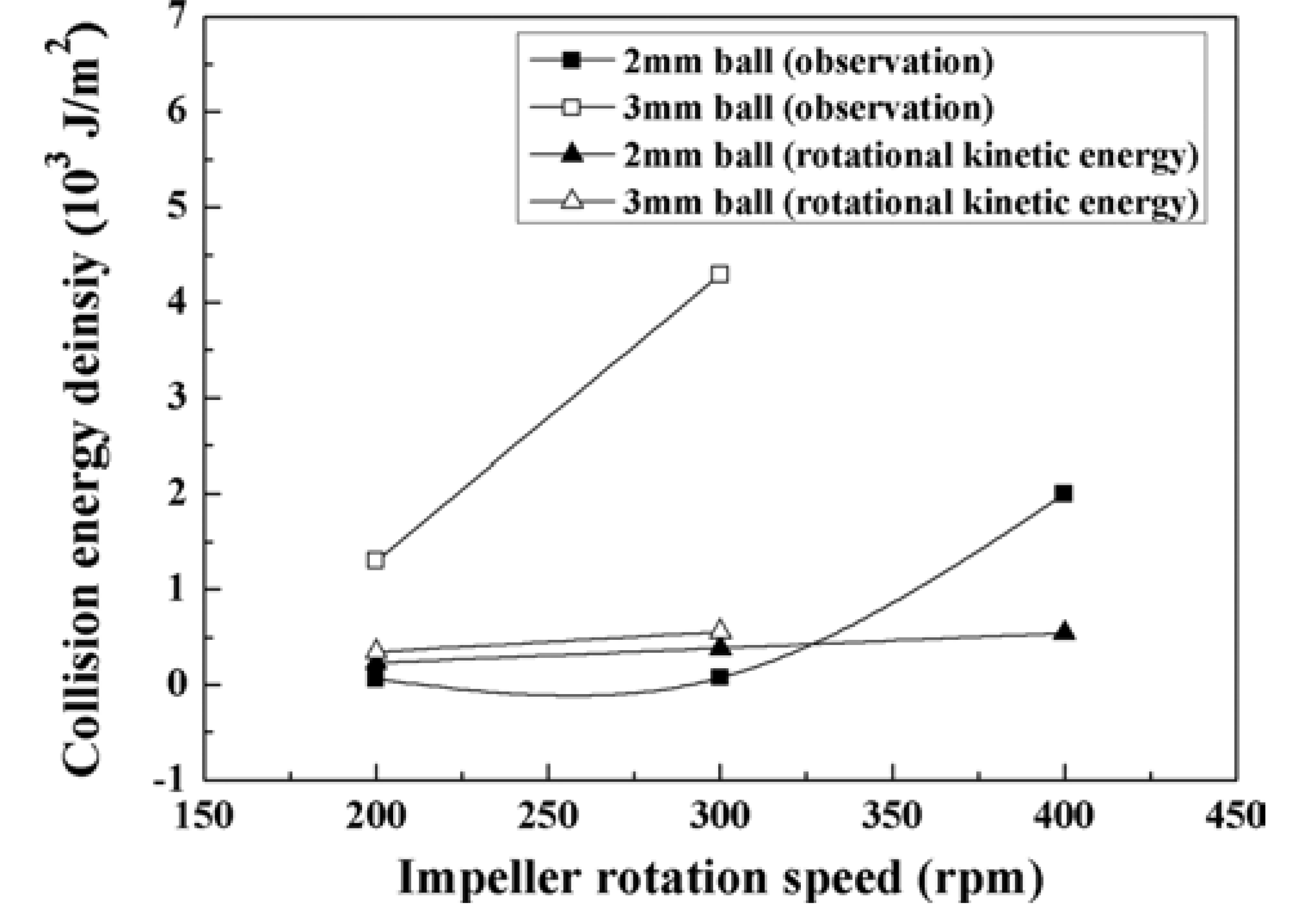
- 506 View
- 2 Download
- 1 Citations
-
 Abstract
Abstract
 PDF
PDF This study is focused on investigating the relation between the particle size of silver flake powder and mechanical milling parameters. Mechanical milling parameters such as ball size, impeller rotation speed and milling time of the attrition ball-mill were controlled to produce silver flake powder. The particle size of the silver flake powder increased with increasing ball size and impeller rotation speed. The change of the particle size of the silver flake powder with mechanical milling parameters was analyzed based on balls motion in the mill container of the attrition ballmill. The silver flake particles were formed at the elastic deformation area of the ball due to the collision between balls. The change of the particle size of the silver flake powder with mechanical milling parameters well consists with the change of the collision energy of ball with parameters mentioned above.
-
Citations
Citations to this article as recorded by- Fabrication of Silver Flake Powder by the Mechanical Milling Process
Hae-Young Jeong, Gil-Geun Lee
Journal of Korean Powder Metallurgy Institute.2016; 23(1): 54. CrossRef
- Fabrication of Silver Flake Powder by the Mechanical Milling Process
- [Korean]
- Supply and Demand Strategy of Rare Metal in Korea − Focusing on the Stocking pile −
- Taek-Soo Kim, Bum-Sung Kim, Min-Ha Lee, Kyoung-Tae Park
- J Korean Powder Metall Inst. 2014;21(4):313-317. Published online August 1, 2014
- DOI: https://doi.org/10.4150/KPMI.2014.21.4.313
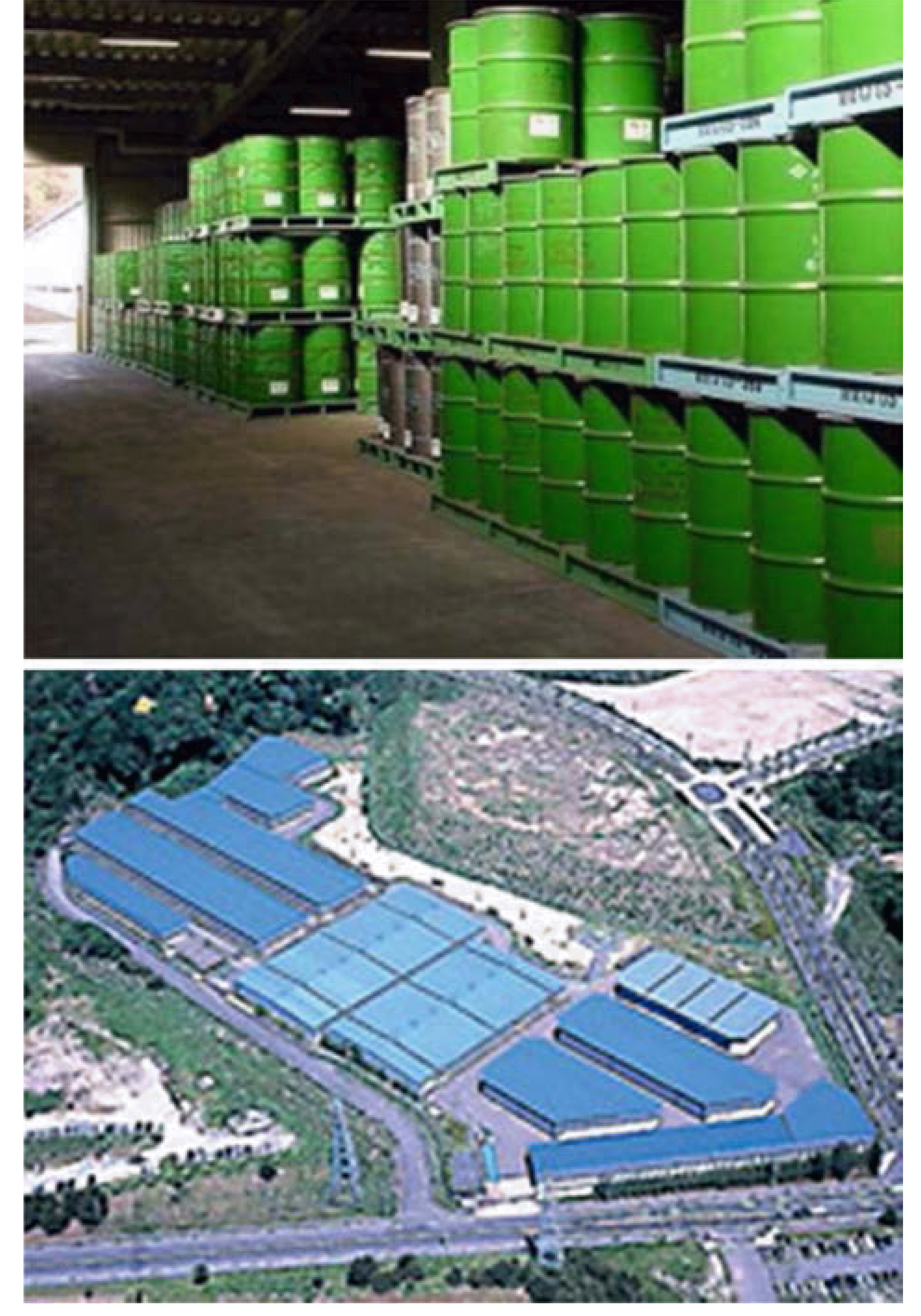
- 783 View
- 4 Download
TOP
 KPMI
KPMI




 First
First Prev
Prev


